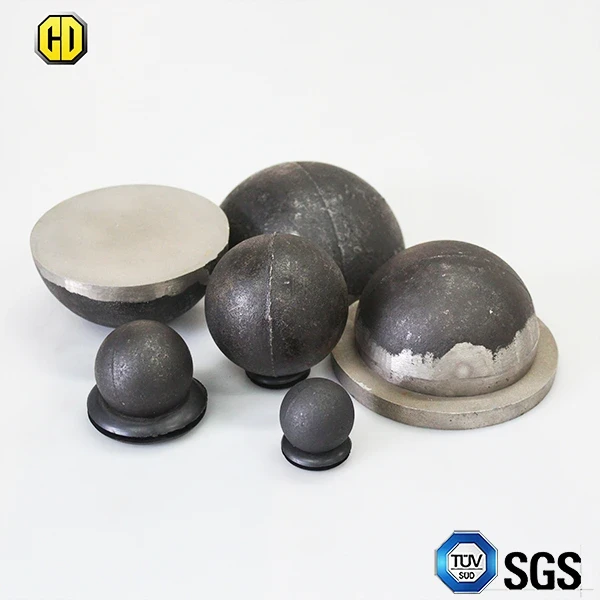Sep . 30, 2025 14:20 Back to list
Why Choose Low Chrome Grinding Media: Durable, Low-Wear?
Field Notes on Low Chrome Grinding Media: What Buyers Quietly Get Right
If you run mills for cement, mining, or power, you already know: choosing media is half science, half street smarts. After years of plant walk-throughs (and more than a few night-shift audits), here’s a practical look at low chrome grinding media—why it’s still the workhorse and where it genuinely pays off.

Industry trend snapshot
Two things are happening: energy costs are forcing tighter grind efficiency, and procurement teams want price stability. High-chrome and forged steels get a lot of buzz, but for clinker, coal, and secondary ore circuits, low chrome grinding media (≈7–10% Cr) keeps winning on cost-per-ton with decent toughness. Many customers say they’re getting more predictable wear, less spalling, and easier stock planning—nothing flashy, just reliable.
What it is (real-world spec)
Product: Medium chrome grinding ball. Origin: KIZUN Industry Zone, Luquan, Shijiazhuang, Hebei, China. Casting type with controlled quench and temper. Sizes from 10–140 mm. Color: black (as-cast/tempered surface).
| Parameter | Typical value (≈ / range) |
|---|---|
| Chrome content | 7%–10% Cr |
| Carbon / Mn / Si | C ≈ 2.0–3.0%; Mn ≈ 0.4–1.2%; Si ≤ 1.2% |
| Diameter | 10–140 mm (±0.5 mm typical) |
| Hardness | HRC ≈ 52–58 (after quench & temper) |
| Microstructure | Tempered martensite + M7C3 carbides |
| Density | ≈ 7.6–7.8 g/cm³ (real-world may vary) |
| Breakage rate | ≤ 0.5% typical in steady circuits |
Where it shines
-
- Cement clinker and raw meal finish mills (cost-per-ton king).
- Coal mills in power plants (balanced hardness/toughness).
- Secondary/regrind in gold/copper/iron ore lines (not SAG).
- Chemical and refractory mills where mixed media is risky.
Advantages: attractive $/t media cost, solid impact resistance, liner-friendly behavior, easy replenishment planning. Actually, liner life often improves because the media isn’t too glass-hard.
Process flow and QC (how it’s made right)
- Material selection: high-carbon white cast iron base with 7–10% Cr; optional Mo/Ni tweaks for toughness.
- Melting & treatment: medium-frequency furnace, deoxidation, controlled sulphur/phosphorus.
- Casting: metal-mold or sand-mold, riser/feeding design to reduce porosity.
- Heat treatment: quench (water/polymer) and temper at ≈ 200–250°C for stress relief.
- Testing: OES chemistry (GB/T 4336), hardness (ASTM E18 Rockwell C or ASTM E10 Brinell), abrasion (ASTM G65), drop test (in-house 3 m × 10,000 drops, batch sampling).
Service life: in cement finish mills, consumption often lands around 50–120 g/t; in ore regrind, it’s wider due to slurry chemistry. To be honest, pH control and mill loading matter as much as the ball itself.
Vendor comparison (quick reality check)
| Vendor | Alloy control | Heat treatment | Certifications | Lead time |
|---|---|---|---|---|
| Chengda (Hebei) | Spectrometer-tracked (≈ ±0.2% Cr) | Quench + temper, hardness window controlled | ISO 9001:2015 | Around 2–4 weeks ex-works |
| Regional Foundry B | Batch-based, some drift in Mn/Si | Quench only; temper optional | Factory CoC | ≈ 4–6 weeks |
| Import House C | Mixed sourcing; spec labels vary | Unclear; check batch docs | Varies by mill | 6–10 weeks |
Customization and usage tips
-
- Size mix: start 70:30 (large:small) in coarse circuits; tighten as residue improves.
- Alloy tweaks: a touch of Mo raises hardenability; Ni can boost toughness, but watch cost.
- Water chemistry: in wet grinding, control pH 7–8 to reduce corrosive wear on low chrome grinding media.
- Charging: maintain media level; starving mills fake “good efficiency” but burn liners and balls.
Mini case note
A Southeast Asia cement plant moved from mixed forged/high-chrome to low chrome grinding media at 90 mm make-up. After 6 weeks, kWh/t was flat, media consumption dropped ≈12%, and liner wear evened out. Not dramatic, but the CFO smiled—predictability is gold.
Standards and data you can ask for
- Chemistry: OES report per GB/T 4336
- Hardness maps per ASTM E18 (or HBW per ASTM E10)
- Abrasion test per ASTM G65 (procedure A/B) for batch benchmarking
- Compliance certificate: ISO 9001:2015; reference GB/T 17445 for cast grinding balls
Citations:
1) GB/T 17445-2009 Cast grinding balls
2) ASTM E18 Standard Test Methods for Rockwell Hardness of Metallic Materials
3) ASTM G65 Standard Test Method for Measuring Abrasion Using the Dry Sand/Rubber Wheel Apparatus
4) ISO 9001:2015 Quality management systems — Requirements
-
Expert Insights on Fabrica de Molinos de Bolas: Industry Trends & Global Applications
NewsNov.24,2025
-
Expert Insights on Fabricantes de Bolas de Molienda de Acero: Global Applications & Trends
NewsNov.23,2025
-
Leading Fabricantes de Bolas de Molienda: Your Ultimate Guide to Grinding Balls
NewsNov.23,2025
-
Fabricante de Bolas de Molienda – Quality Grinding Balls for Efficient Industry
NewsNov.23,2025
-
Trusted Proveedores de Medios de Molienda for Efficient Industrial Grinding
NewsNov.22,2025
-
Proveedores de Bolas de Molienda: Your Guide to Top Grinding Ball Suppliers & Industry Insights
NewsNov.22,2025
Realted Products
















